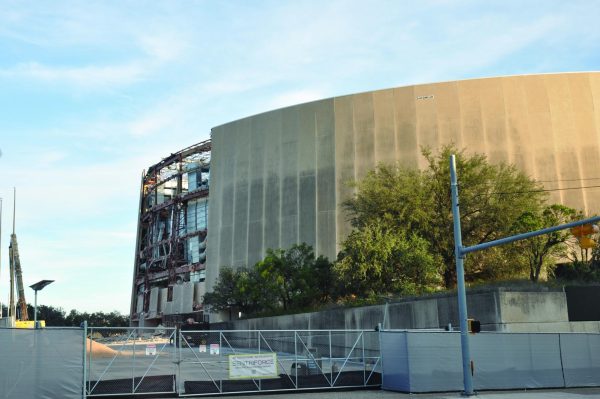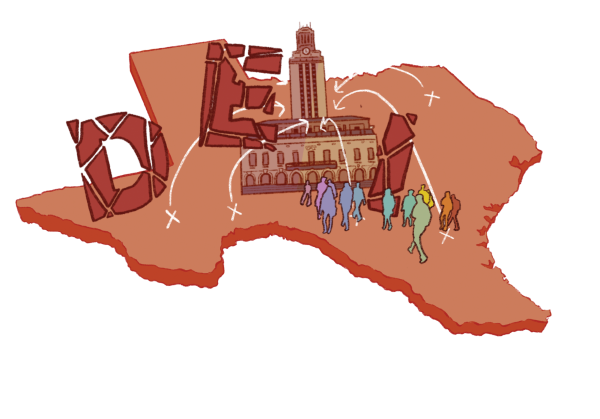Closing LASA? Starting at nine?
District weighs various cost-saving options after budget committee recomendations
February 19, 2019
In a recent report about the AISD budget deficit, magnet programs, including LASA, were described as “separate and unequal,” “serving to divide local communities,” and sources of “historical grievances and upheaval.” The report advocated shuttering the doors of the LASA, Kealing and Fulmore magnets to offer more advanced academics at all middle and high schools.
“[T]he Task Force would like to see the district be more equitable in terms of the dollars it allocates to ensure that all students succeed,” the report said. “The cost of [magnet] bussing in particular is difficult to justify considering dollars spent on transportation for the few could be better spent on additional opportunities that benefit the many.”
The report was developed by the Budget Stabilization Task Force (BSTF), a volunteer committee tasked with providing equitable recommendations to address the budget deficit. As Austin Independent School District (AISD) enrollment continues to drop, and recapture sends more money to the state, every school must do its part to tighten up. In addition to closure, secondary BSTF proposals included a pay-to-ride system for magnet buses and decreasing magnet staffing allocations. The report’s recommendations are just one of many inputs being considered by the Superintendent’s office, who will propose a budget in June for a Board vote, said AISD Trustee Cindy Anderson.
“The superintendent and his administration, his cabinet team, will take the recommendations from the task force and will work through them into what’s really best for the district, what aligns with the priorities that both the administration [and] the board have identified,” Anderson said. “He’ll ultimately come back to the board and say, you know, these are the things I want to build into the budget for the next fiscal year. And then ultimately the board will be the ones that approved that, and we’ll approve the budget.”
Anderson had a heated exchange about the magnet recommendations with BSTF tri-chair Robert Thomas, centering around one passage which said that magnets “stonewall… resources from reaching a critical mass” of underprivileged students. Anderson said the language was offensive. Thomas said the recommendation was fact-based, and that her taking offense was offensive. Anderson told the Liberator such phrasing is unnecessary.
“I find that line of thinking to be sort of unproductive and simply untrue,” Anderson said. “Not everybody agrees on the same definition of equity. Some believe that equity means that everybody gets the same thing… whereas others believe that equity means that every child should get what they need. Every student has different needs.”
Equity was a concern in other, less radical recommendations, including a pay-to-ride system for magnet busing. Plowman said that fees, even if enacted on a sliding scale, would make LASA less accessible to already-underrepresented populations, especially low- and middle-income students.
“Even with respect to a sliding scale, we have a lot of families that are refugees or immigrants that… are afraid of filling out a free or reduced lunch application,” Plowman said. “And so then they may not also have the financial means to pay for transportation if there was a charge for it. And so there are some barriers that would theoretically unfortunately negatively affect the students that I think we’ve been trying to attract and support, specifically with efforts to increase diversity in the program that might inadvertently be harmed.”
Cruz said more analysis would be needed over the course of several years before a decision could be made on busing. He said that pay-to-ride busing “certainly” would not be implemented in the next couple years.
“This is one that… would take much more time to study to look at the efficacy of implementing something like this,” Cruz said. “We want to make sure that we do provide transportation to our students even in their neighborhood and choice schools. We’re just not ready to make a decision.”
Despite deficits, Cruz said most cuts would take additional time to examine, and the district’s focus was still on an additive mindset. The challenge for the district, he said, is to pursue this additive philosophy while being aware of the austerity reality.
One likely solution involves shifting LASA’s start time later, according to Plowman. If LASA ran from 9 a.m. to 4:30 p.m, aligning with other district high schools, buses could run multiple routes and possibly save over half a million dollars.
“My understanding is that the district is looking at just changing the times and I imagine that the reasonable approach is to try that and look at the cost-savings before they do something more drastic in a future year,” Plowman said. “It will cut down on the gas and the time on the road so I imagine they will want to do something like that first rather than do something that would potentially have a negative impact [like] cutting the bussing totally.”









